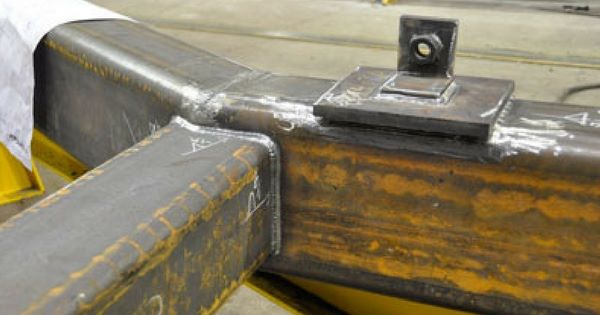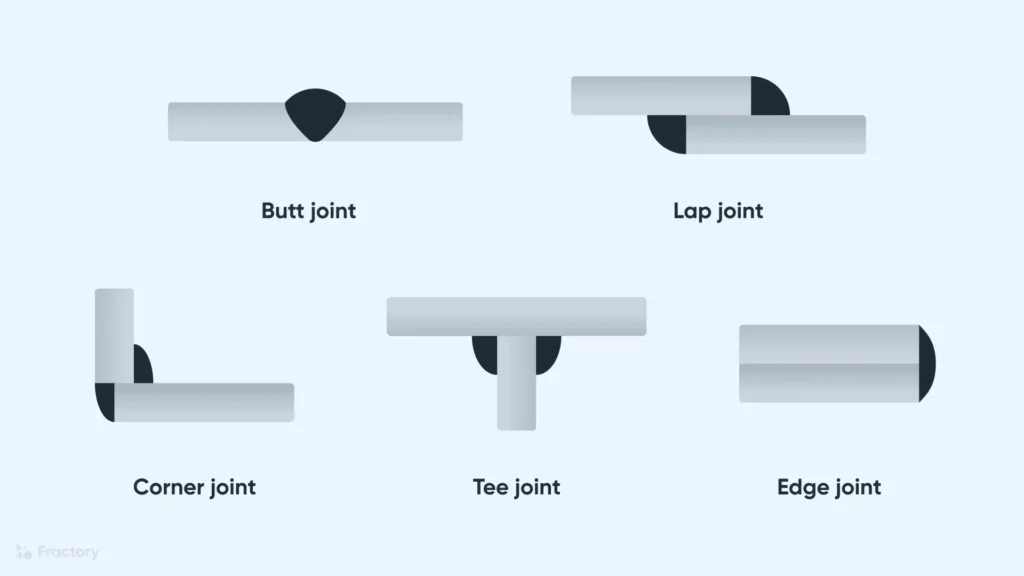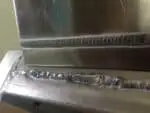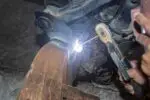Welding is one sort of permanent joining procedure that may combine two or more solid components to form a unit. There are other different joining methods like riveting and adhesive too, but today, we will be discussing the limitations of welded connections.
Welded connections cannot be expanded in any way. Contractions in the connection might cause it to become weak and after some time, it is prone to forming cracks.
Internal and exterior distortions might occur when the regions of connection are subjected to uneven heating during the welding process.
Let us discuss more limitations of welded connections.
Disadvantages of welded connections
1.) Brittle fracture is more likely in the case of welded connections.
2.) Members may bend as a result of uneven heating and cooling during welding, resulting in extra strains.
3.) Welded connections are more likely to fail as a result of fatigue pressures.
4.) Welded joint examination is time-consuming and costly. It can only be accomplished by employing NDT.
5.) Welding requires highly competent individuals.
6.) It is tough to weld properly in the field.
7.) Welded joints are more fragile than linked pieces and so have a lower fatigue strength.
8.) Welding requires both skilled work and electricity.
9.) There is no allowance for expansion and contraction in welded connections, thus racks are possible.
10.) Welding inspection is more complex and expensive than riveting inspection.
11.) Internal air pockets, slag inclusion, and partial penetration are all difficult to see.
12.) They are lasting joints that can only be dismantled by breaking the weld.
13.) Special equipment is required.
14.) Not challenging to achieve in less ductile environments.
15.) Under cyclic stress, this material is prone to flaws and fatigue fractures.
16.) There is a chance of cracks developing in the frame since there is no room for expansion and contraction.
17.) The majority of welding procedures are conducted manually and are labor intensive. It needs highly skilled labor and supervision. Many welding activities are classified as skilled trades, and labor to undertake these operations may be in short supply.
18.) Most welding techniques are hazardous due to the use of high energy.
19.) Because welding creates a permanent link between the components, it does not allow for easy removal. Certain quality faults in the welded junction might be difficult to identify. The flaws might diminish the joint’s strength.
Advantages of welded connection
Let us understand the benefits of welded connection:
1.) A welded connection guarantees 100 percent efficiency, which is relatively high when compared to the 75 – 90 percent efficiency usual with riveted connections.
2.) Welded connections are easier to use for intricate constructions, especially when using steel pipes.
3.) Welding as a method of joining produces a more rigid junction. This is a critical prerequisite for frames.
4.) When riveting is done in inhabited regions, there is concern for the safety of the residents. Precautionary measures are required to safeguard the public from flying rivets.
5.) A welded construction is generally more aesthetically beautiful. This means that welding produces a more aesthetically beautiful structure than riveting.
6.) There is no need for a hole for welding, hence there is no loss in area. As a result, structural members are more effective at bearing load.
7.) Extra plates, such as filler plates, gusseted plates, connecting angles, are not used in welding, resulting in a lower total weight of the structure.
8.) Welded connections are more cost effective since they need less work and material.
9.) The efficiency of a welded junction exceeds that of a riveted joint.
10.) Welded joints are more visually appealing than riveted/butted ones.
11.) When compared to riveted joints, the manufacturing process is quicker.
12.) The welding procedure can give complete stiff joints.
13.) It is simple to change and add to the existing framework.
14.) Unlike riveting, there is no noise created during the welding process.
15.) When compared to riveting, the welding process requires less work space.
Let us know a little more about welding.
What is welding?
Welding is the technique of joining two metal components by melting the materials at their contact to form a connection.
To link the two components together, a filler substance is often employed. The pieces being connected are known as base metal, and the filler is known as weld metal.
Because structural welding is often performed using an electrical arc method, the weld metal is typically supplied via weld electrodes, also known as welding rods.
Welding types and procedures
Welding creates a strong connection between two components, known as a weld joint. A weld joint is the intersection of two components that have been united by welding.
Weld joints are divided into two types:
Joint types
The different types of joints are-
1.) Butt joints- The pieces of this joint type are linked at their edges and lay in the same plane.
2.) Corner joint- The pieces of a corner joint create a right angle and are linked at the angle’s corner.
3.) Lap joint- This joint is made up of two overlapping segments.
4.) Tee joint- A tee junction has one component that is perpendicular to the other in the shape of the letter “T.”
5.) Edge joint- An edge joint is formed by two pieces that are parallel with at least one of their shared edges, and the junction is formed at the common edges.
Welding types used to attach the parts
1.) Fillet welds are typically triangular in form and unite parts that are at right angles to one another. Fillet welds are usually the most cost-effective because they require little surface preparation and can be used in almost any connection configuration.
2.) Groove welds are used to fill the groove between two components’ ends. Groove welds can be created in square, bevel, V (or double-bevel), U, J, or flare V joints (or flare bevel).
Different Welding techniques
- Gas Welding
- Electrical Welding
- Flux Arc Welding
- Plasma Welding and Cutting
To Conclude
With so many amazing benefits to the welded joint, there are also significant downsides that are inevitable in particular situations.
As a result, it is critical that only an expert work with the steel connection through welding to guarantee that the connection is not overheated.
However, we have also mentioned the advantages of welding, so that you weigh in on the pros and cons before employing the procedure.








